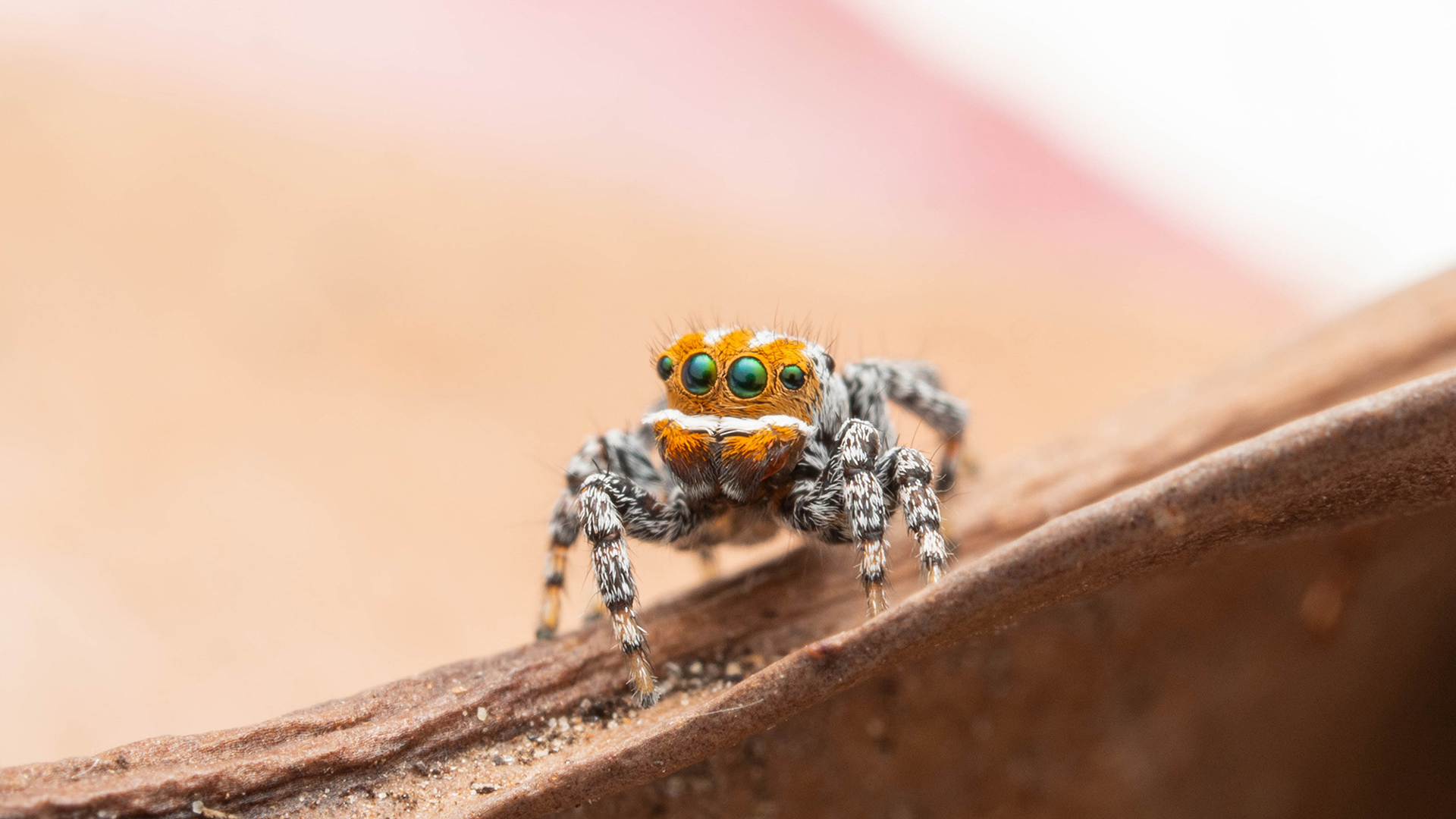Endearing orange-faced peacock spider looks like 'Nemo' (and dances)
A citizen scientist discovered Maratus nemo in the wetlands of southern Australia.

A newfound species of colorful, dancing peacock spider has an endearing orange face striped with white, leading the arachnologist who described the spider to name it "Nemo," after Pixar's famous clownfish.
Unlike the plucky protagonist in the 2003 animated film "Finding Nemo," the wee spider wasn't lost — it was just unknown to science. Australian photographer and spider enthusiast Sheryl Holliday captured images of the jumping spider last year and shared them on Facebook. That brought the orange-faced arachnid to the attention of Joseph Schubert, a spider taxonomist at the Museums Victoria in Melbourne, Australia.
"I thought, 'Oh, wow; that looks like it might be a new species,' so I got in contact with her [Holliday], and she ended up sending me some specimens," Schubert, an undergraduate student in the Invertebrate Diagnostics Lab at Murdoch University, said in a statement. At the time, Schubert had identified 13 other peacock spider species in the Maratus genus, and he named seven of those in 2020, according to the statement.
Related: Incredible photos of peacock spiders
Holliday, an ecological field officer for Nature Glenelg Trust, found the spider in a marshy wetland ecosystem near South Australia's Mount Gambier, and she collected five individuals — four males and one female — in November 2020, which she sent to Schubert. He published a description of the spider, naming it Maratus nemo, on March 25 in the journal Evolutionary Systematics.
As in other peacock spider species, M. nemo's vivid colors appear only in the males, while the mostly brown females resemble other Maratus females. Identification of M. nemo females may therefore depend on whether they're found close to an M. nemo male, Schubert wrote in the study. Males have dark-brown bodies sprinkled with white, and dabs of orange peek out near their feet and at their leg joints. Their faces are a brilliant orange, with a horizontal white stripe under their eyes and shorter vertical white stripes atop their heads.

Each spider is about the size of a grain of rice, with males measuring no more than 0.17 inches (4.25 millimeters) long and females measuring up to 0.2 inches (5 mm) long, according to the study. Peacock spider males are known for their elaborate courtship dances, and M. nemo proved to be no exception. Schubert observed a male beginning his dance by lifting a leg and "slowly waving it in a partially flexed position." Then, as a female came closer, the male waved both front legs while enthusiastically bobbing his posterior, creating "audible vibrations" on the leaf where he danced, Schubert reported.
Sign up for the Live Science daily newsletter now
Get the world’s most fascinating discoveries delivered straight to your inbox.
However, this was only a partial display in an artificial environment. "In the wild, males may exhibit a more complete courtship display with multiple modes of courtship," Schubert wrote in the study.
To date, researchers have named 92 species of Australian peacock spider; of those, 76 species were described since 2010, according to the study. Finding and identifying unknown species in Australia, such as M. nemo, is more urgent than ever, as much of the continent's wildlife is threatened by habitat loss, wildfires and the widespread use of pesticides, Schubert said in the statement.
"Roughly only 30 percent of Australia's biodiversity has [been] formally documented scientifically, so this means that we could be losing species before we even know that they exist," Schubert said.
Originally published on Live Science.

Mindy Weisberger is an editor at Scholastic and a former Live Science channel editor and senior writer. She has reported on general science, covering climate change, paleontology, biology and space. Mindy studied film at Columbia University; prior to Live Science she produced, wrote and directed media for the American Museum of Natural History in New York City. Her videos about dinosaurs, astrophysics, biodiversity and evolution appear in museums and science centers worldwide, earning awards such as the CINE Golden Eagle and the Communicator Award of Excellence. Her writing has also appeared in Scientific American, The Washington Post and How It Works Magazine. Her book "Rise of the Zombie Bugs: The Surprising Science of Parasitic Mind Control" will be published in spring 2025 by Johns Hopkins University Press.









